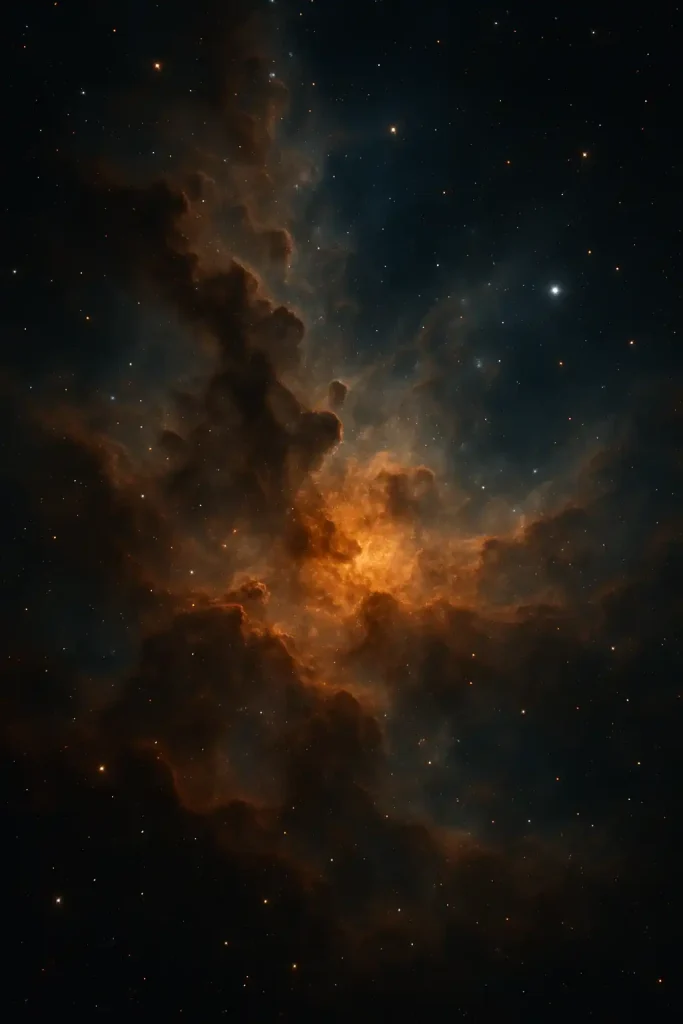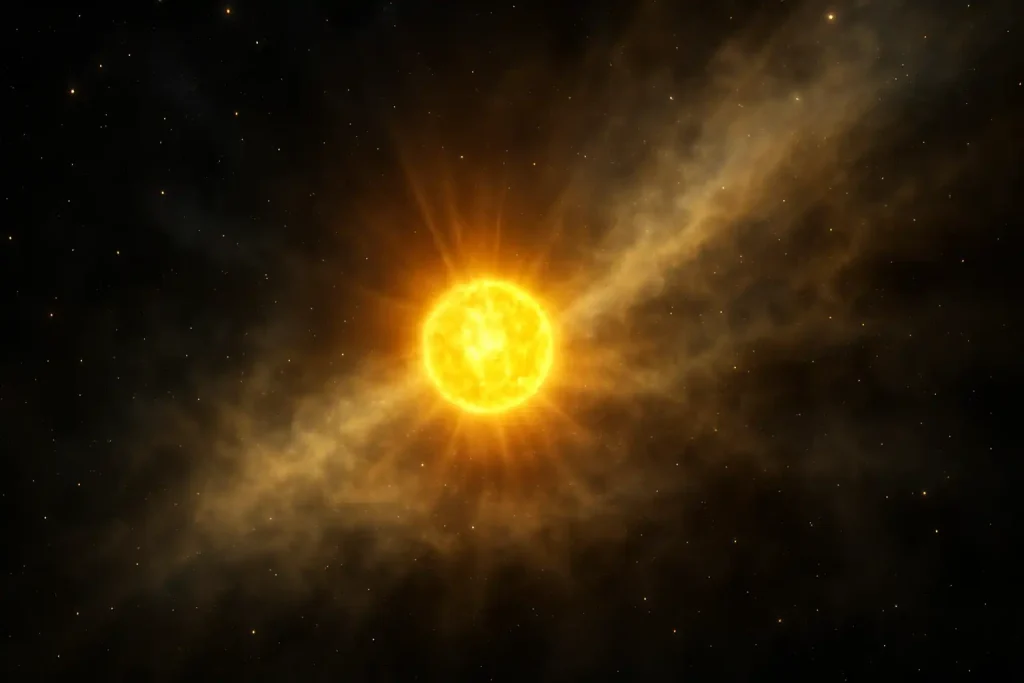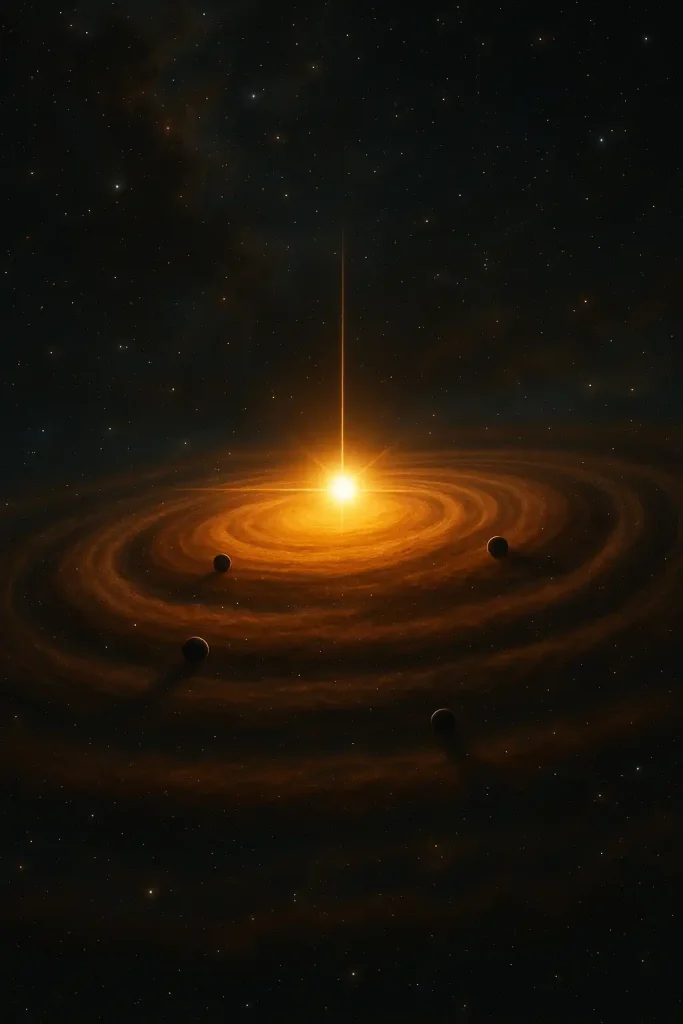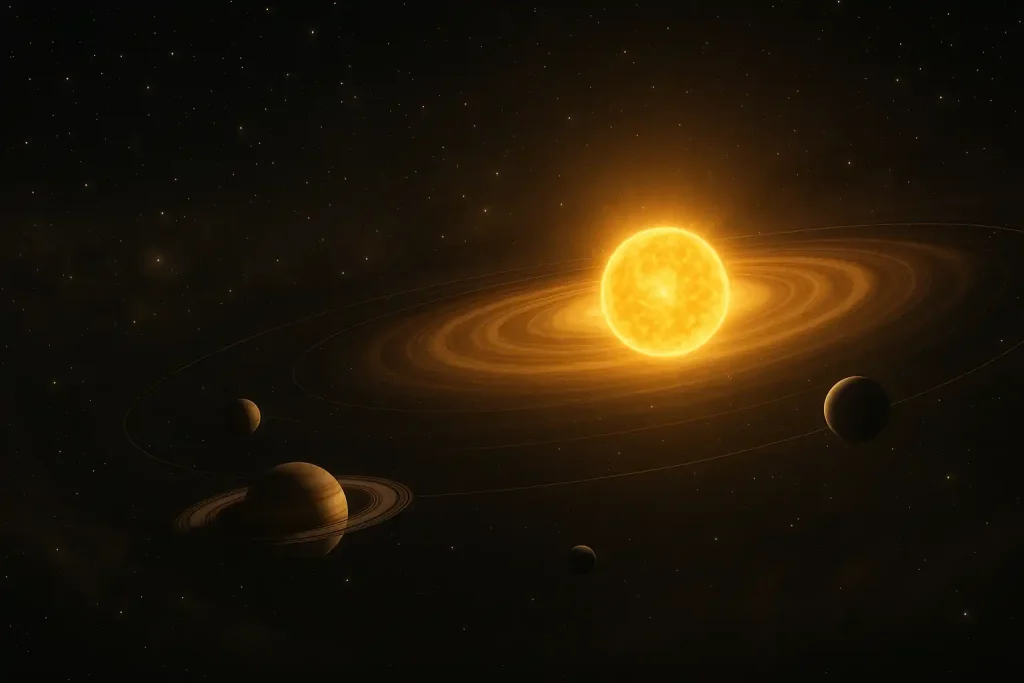Introduction
Stars brighten the night sky like tiny lanterns, bringing life to galaxies and even helping create us. The star formation process starts in giant clouds of gas and dust, where gravity turns a messy mix into glowing stars. There are 100–400 billion stars in the Milky Way, showing how busy this process has been for 13.8 billion years. From ancient people staring at the sky to scientists using powerful telescopes, we’ve always wanted to know how stars are born. Today, tools like the James Webb Space Telescope show us these births in amazing detail. Let’s explore how and why stars form, step by step.
Have you ever wondered what makes the sky glow? The star formation process is like a recipe that turns gas clouds into shining stars over millions of years. It’s been happening since the universe began, with the Milky Way making 1–2 stars each year. This process creates the elements we’re made of, like the carbon in our bodies. It’s a story of how the universe builds its lights, one star at a time. Join me as we uncover the secrets of star birth.

Early Universe and Gas Clouds
After the Big Bang 13.8 billion years ago, the universe was a hot mix of tiny particles. As it cooled over millions of years, hydrogen and helium gathered into huge star-forming clouds, some as wide as thousands of light-years. These clouds, holding 10⁵–10⁶ times the Sun’s mass, were the first places where stars could form. Without them, the universe would be dark, with no stars to light it up. “The universe is a pretty big place, but stars make it feel cozy,” Carl Sagan once said. These clouds were the starting point for a starry universe.
Around a billion years after the Big Bang, gravity began acting like a helper, pulling particles closer together. Star-forming clouds, very cold at 10–20 K and super dense, were just right for gravity to start squeezing them. Some clouds were so big they could make thousands of stars at once, brightening the young universe. We can still see traces of these events in old star clusters, studied by telescopes like Hubble. Long ago, people could only dream of understanding these faraway places. The early universe was like a giant factory for stars.
What made these clouds so good at making stars? Their cold temperatures and huge size let gravity take over, pulling everything inward to start forming stars. These clouds were like the building blocks for galaxies, full of possibilities. Imagine the universe switching on its lights, one star at a time, as these clouds got to work. This process created the foundation for the starry sky we see today. It turned a dark universe into a bright, glowing space.

The Birth Process: From Nebula to Protostar
How does a cloud turn into a star? The star formation process begins in nebulae, like the Orion Nebula, 1,344 light-years away, which is a big cloud of gas and dust. Gravity pulls pieces of the cloud together into tight clumps, like gathering ingredients to make a cake. These clumps, often just a fraction of a light-year wide, spin and shrink over millions of years. They heat up as they get smaller, forming a protostar—a kind of early star that’s still growing. It’s a slow process, but it leads to something amazing.
As the protostar grows, its center gets very hot, reaching 10⁶ K, which causes a lot of activity. “Stars are born in violence,” said astronomer Cecilia Payne-Gaposchkin, and she was right—protostars shoot out jets of gas, like a baby star stretching its arms. If it collects enough material, at least 0.08 times the Sun’s mass, its core hits 10 million K, starting hydrogen fusion. This fusion makes the protostar a real star, shining for billions of years. The star formation process is like a long test, and only some pass.
Not every clump becomes a star, though. Some end up as brown dwarfs, which are like stars that never fully light up, glowing weakly for a long time. In the Milky Way, only 1–2 stars form each year, according to ESO data, showing how tough this process is. Nebulae like Orion, which you can see with a small telescope, have hundreds of protostars at different stages. Scientists use special tools to look through the dust and watch stars being born.
What decides if a clump will become a star? It’s all about mass—smaller stars like our Sun burn steadily for billions of years, while bigger ones, up to 20 times the Sun’s mass, burn out quickly in explosions. The star formation process sets up how stars will live, from small and steady to big and bright. Every star we see started in a nebula, showing the universe’s incredible ability to create.

Why Stars Form: Cosmic Drivers
Why does the universe keep making stars? Gravity is the main force, pulling gas and dust into tight clumps inside star-forming clouds. Things like turbulence, which is like invisible winds in space, stir the clouds into dense spots ready to collapse, and explosions from dying stars can push clouds to form new stars. In galaxies like the Milky Way, dense areas help make 1–2 stars per year. It’s like a chain reaction, where one star’s birth leads to another. The universe depends on this cycle to keep going.
Other forces, like magnetic fields and gas pressure, try to stop the process. “The cosmos is a battleground of forces,” said physicist Subrahmanyan Chandrasekhar, showing how gravity has to win this fight. Only about 10% of a nebula’s material turns into stars, with the rest blown away by star winds. Places like the Eagle Nebula’s “Pillars of Creation” show this struggle, with gas shaped by new stars’ energy. The star formation process is a balance of pushing and pulling, driven by nature’s rules.
Galaxies play a big role, too. In some galaxies, collisions make thousands of stars at once, while calmer ones like ours take it slow. Star formation recycles gas from old stars into new ones, keeping galaxies alive and bright. Without this process, galaxies would fade, and life, which needs star-made elements, wouldn’t exist. It’s the universe’s way of making sure the sky stays full of light.

Star Formation in the Modern Era
Today, we can watch stars being born with amazing technology. The James Webb Space Telescope (JWST), launched in 2021, takes clear pictures of places like the Carina Nebula, showing young stars in detail. On X, JWST’s pictures get millions of likes, making cosmic star birth a big topic online. ALMA in Chile studies star-forming clouds at 10–100 K, showing how gas moves to form stars. “We’re watching stars being born in real time,” says astronomer Nia Imara, capturing how exciting this is. It’s like getting a front-row seat to the universe’s show.
This technology helps us understand the star formation process better than ever. ALMA shows that 30–40% of new stars form in groups, like friends sticking together. Hubble’s pictures of the Orion Nebula reveal hundreds of young stars, some only a million years old. Light pollution blocks stars for 80% of city people, per surveys, so space telescopes are super important. These tools bring the universe closer to everyone. We’re learning more about stars every day.
People love hearing about star formation, even in movies and news. Films like Interstellar show nebulae in their stories, and 70% of Americans follow space news, according to Pew Research. On X, NASA’s posts start conversations about star birth, with fans sharing their excitement. Even regular people help out, using apps to find nebulae on clear nights. The star formation process connects science with our curiosity, making it fun for everyone.
The universe has its challenges, though. Big stars, 8–20 times the Sun’s mass, explode at the end of their lives, shaking up nearby clouds with their blasts. But these explosions can also start new stars, keeping the cycle going. Telescopes show stars forming in faraway galaxies, linking us to the universe’s past. Each picture helps us understand the big story of stars.

Impact and Significance of Stars
Stars do so much more than just shine in the sky. Through stellar evolution, they create elements like carbon, oxygen, and iron inside their hot cores—elements that make up our planet and even us. When stars die, they spread these elements, with 90% of Earth’s atoms coming from ancient stars, per NASA. Without stars, there’d be no ingredients for life as we know it. Stars are like builders, making the pieces that form everything around us.
Galaxies need stars to hold their shape and glow. The Milky Way’s 100–400 billion stars form its spiral arms, and their light helps scientists study faraway galaxies. When stars explode, they add metals to space, which helps create molecules like water. Stars also shape galaxies over billions of years by pulling gas and dust together. They’re like the architects of the universe, building the structures we see in the sky.
Stars also inspire us in big ways. From ancient stories about constellations to today’s X posts about JWST’s pictures, cosmic star birth captures our imagination. About 60% of people look at the stars each year, per surveys, and stars appear in art like Van Gogh’s Starry Night or songs like Coldplay’s “Yellow.” They remind us we’re part of a huge, amazing universe, connecting us to something bigger.

Leave a Reply